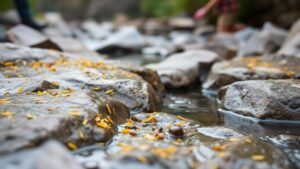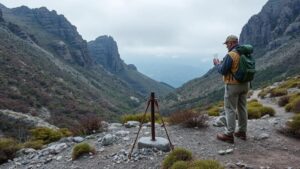Spotting Bedrock Features That Act as Natural Gold Concentrators
Spotting Bedrock Features That Act as Natural Gold Concentrators
Gold is one of the most sought-after natural resources, and understanding where to find it is essential for prospectors and geologists alike. Certain bedrock features act as natural gold concentrators, allowing enthusiasts to increase their chances of discovering this precious metal. This article explores the key geological formations and processes that help in identifying areas likely to contain gold deposits.
Understanding Bedrock and Its Role in Gold Concentration
Bedrock refers to the solid rock that underlies loose materials such as soil or gravel. It plays a critical role in the natural processes of gold formation and concentration. Over millions of years, geological forces shape and alter bedrock, often leading to the accumulation of minerals like gold. To identify effective natural gold concentrators, it is key to understand specific bedrock features and their characteristics.
Types of Bedrock Features Favorable for Gold Accumulation
Several geological features act as indicators of potential gold deposits. Understanding these features can help prospectors focus their efforts on likely gold-bearing areas.
- Fractures and Faults: These geological structures can trap gold particles. Over time, water flowing through the cracks can deposit gold and other heavy minerals. For example, the Mother Lode region in California is well known for its gold-bearing quartz veins intersecting these fractures.
- Gravel Bars and Pockets: In riverbeds where the flow is slower, gravel bars can form, creating areas where heavier materials like gold settle. exploration of gravel bars in rivers such as the Yukon River has yielded substantial gold finds.
- Layered Sedimentary Rock: These formations often trap gold in pockets created by varying deposition processes. Gold is routinely found in such sedimentary layers in places like the Witwatersrand Basin in South Africa.
The Role of Hydrothermal Processes
Hydrothermal processes involve the movement of heated fluids through rock, which can alter existing mineral compositions. These processes are significant in creating gold deposits. Gold can precipitate and concentrate near the source of hydrothermal activity. For example, the famous gold mines in Nevada, such as the Carlin Trend, showcase how hydrothermal systems can result in rich gold deposits.
Importance of Historical Mining Activity
Areas with historical gold mining activity can offer clues about current gold concentrations. Often, mining operations target the most accessible deposits, leaving areas nearby unexplored. Assessing historical maps can provide insight into previously overlooked locations that may still hold gold.
Real-World Applications: Prospecting Techniques
Equipped with knowledge about natural gold concentrators, prospectors can adopt various exploration techniques. Here are a few methods:
- Prospecting with Metal Detectors: Metal detectors can help locate gold in areas where bedrock features suggest potential deposits, particularly in areas with shallow overburden.
- Panning in Stream Beds: Gold panning in sediment deposited by rivers flowing over fractured bedrock is a practical approach for small-scale prospectors.
Challenges and Considerations
While identifying bedrock features that concentrate gold, prospectors must also consider potential challenges. Variability in sediment types, water flow changes, and environmental regulations can affect the feasibility of any prospecting operation. Also, careful consideration of the ecological impact is essential to ensure sustainable exploration.
Conclusion
Spotting bedrock features that act as natural gold concentrators is a vital skill for anyone interested in gold prospecting. By understanding the geological formations, hydrothermal processes, and employing effective prospecting techniques, individuals can enhance their chances of uncovering gold. As always, it is advisable to stay informed of local laws and regulations and to conduct responsible exploration that preserves natural landscapes.


